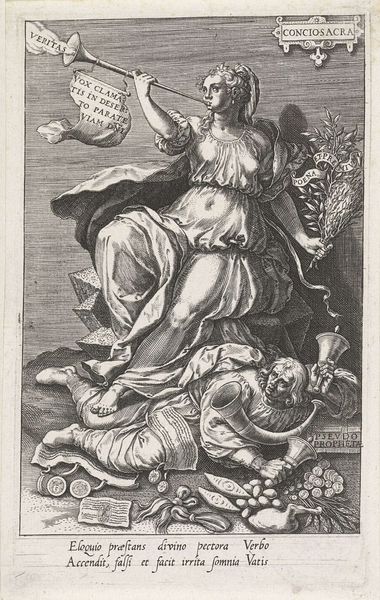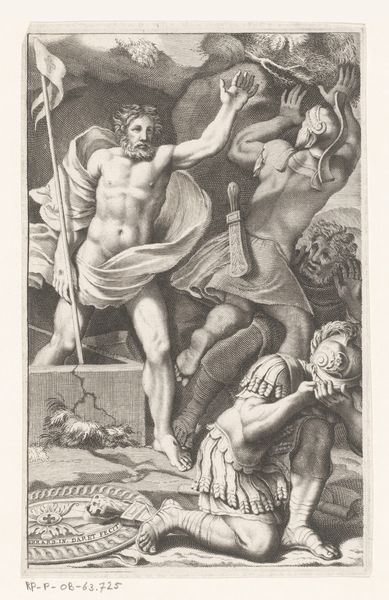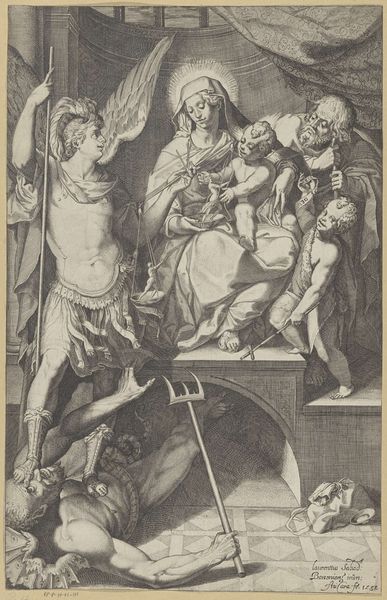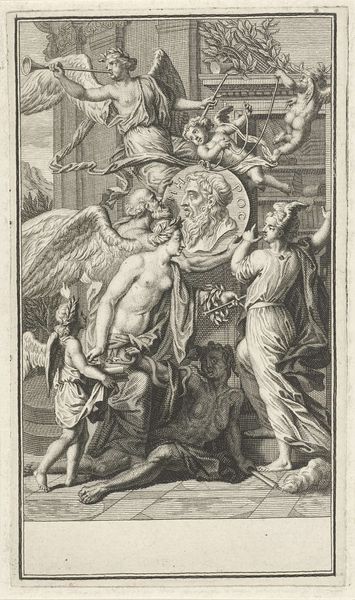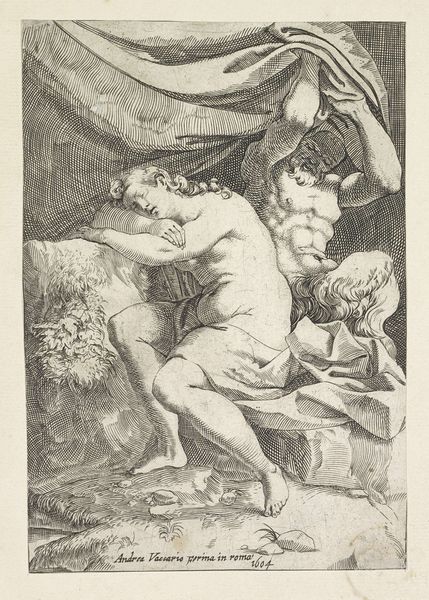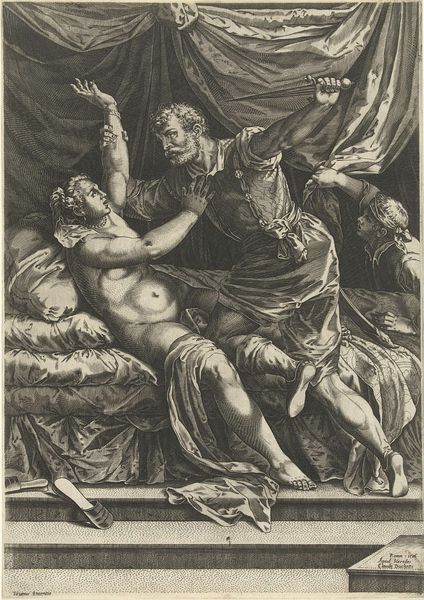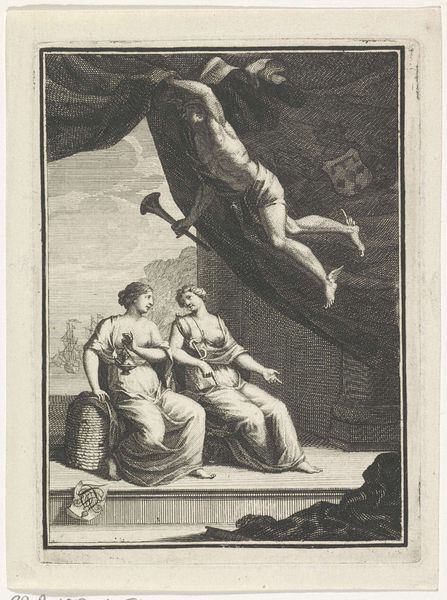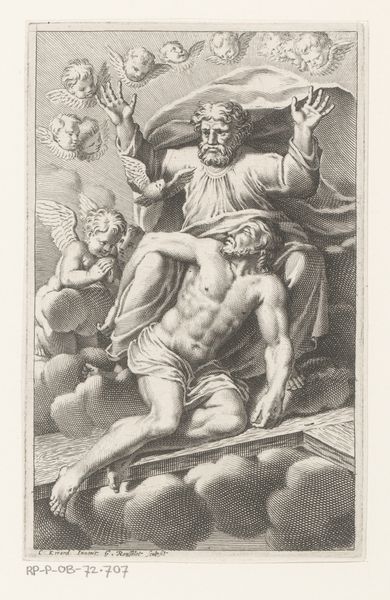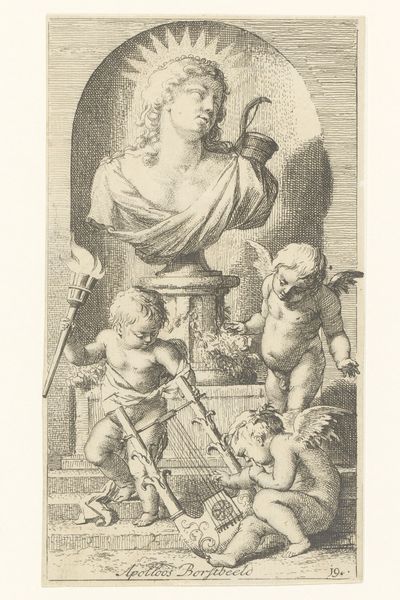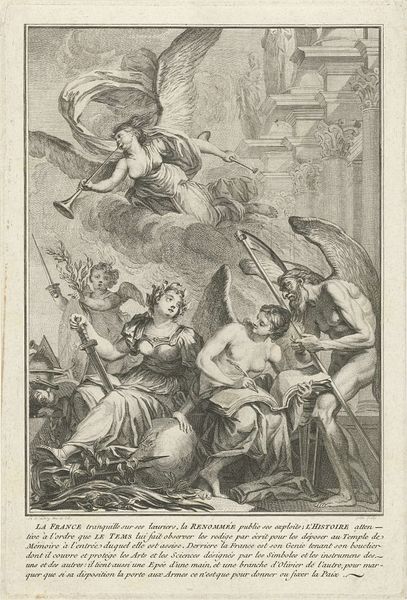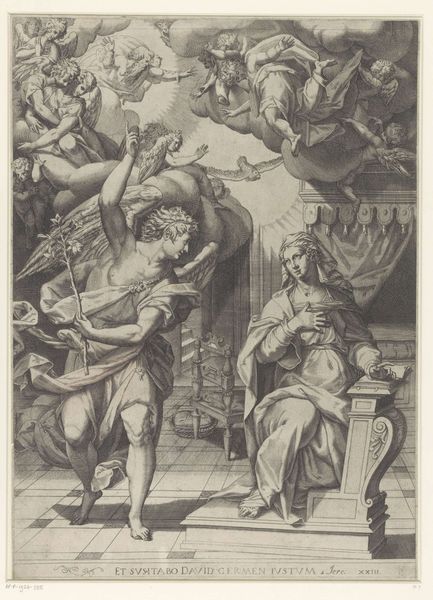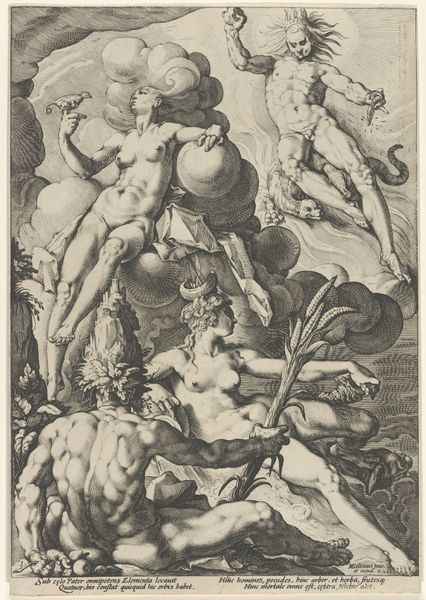
engraving
#
allegory
#
baroque
#
old engraving style
#
caricature
#
figuration
#
portrait drawing
#
history-painting
#
nude
#
engraving
Dimensions: height 180 mm, width 123 mm
Copyright: Rijks Museum: Open Domain
Curator: This is "Venus and Amor met Pan", an engraving created in 1601 by Franz Aspruck, and currently held in the Rijksmuseum. Editor: Right, the textures, for one thing, just strike me. Look at the heavy drape in the background and how it contrasts with the polished column, or Pan’s raw flesh. It's quite dramatic for a, well, a rather peculiar scene. Curator: It is an allegorical scene. The technique here is crucial: Aspruck masterfully uses engraving to render different materials and to establish this complex play between shadow and light. Notice the lines. Close inspection of line weights, directions and intersections yields so much detail. Consider how an engraving from 1601 differs in manufacture, consumption, and cultural status compared to works from today. Editor: Totally. It gives this whole history painting thing a raw, visceral feeling that most academic art just doesn’t have. But Pan! That lecherous look—and Venus practically shoving Cupid toward him. It's like she is pimping out love to brute sensuality or am I off the mark? Curator: Not necessarily. This gets at how prints circulated and how meanings of the image likely differed across consumers in Antwerp versus other parts of Europe. It could reference philosophical debates around beauty, pleasure, desire and other forms of "earthly love", maybe a reflection on the classical past with respect to shifting contemporary values. Editor: Yeah, or maybe someone just had a wicked sense of humor. I dig the inscription, though I can't make heads or tails of the Latin, which, even untranslated, contributes to a somewhat enigmatic aura. Curator: Exactly! Prints were made for diverse audiences, so perhaps part of the joy lies in this act of interpretation. It required both technical mastery on the artist’s part and a keen, educated viewer who understood these allegorical visual cues. Editor: Looking at this again, I’m thinking about how artists used reproductive engravings like this as basically ads for themselves and models for future commissions, a way of disseminating stylistic choices. Pretty forward-thinking. Curator: Precisely. Aspruck, here, reveals engraving not just as a reproductive technique but as a medium for conveying artistic identity and social critique. Editor: Well, now I see "Venus and Amor met Pan" less as some relic and more as a lively piece, speaking to enduring questions. Curator: A fitting end indeed for us both. Thank you!
Comments
No comments
Be the first to comment and join the conversation on the ultimate creative platform.
